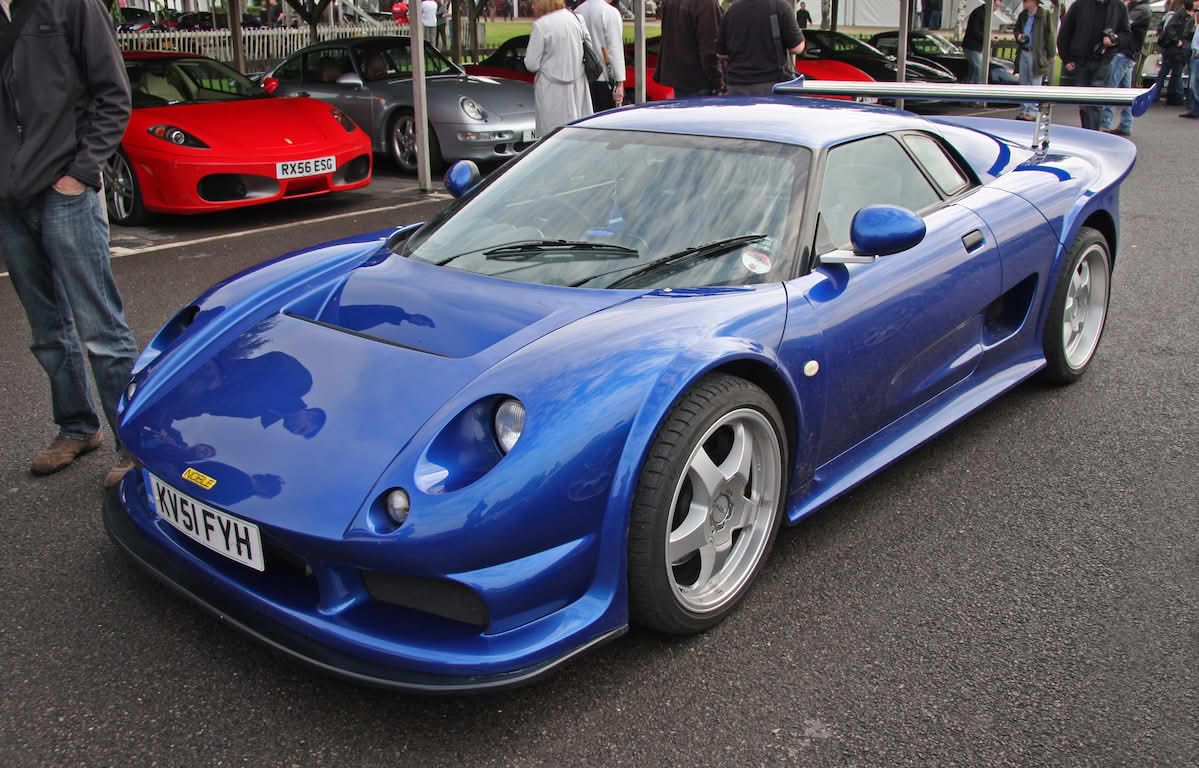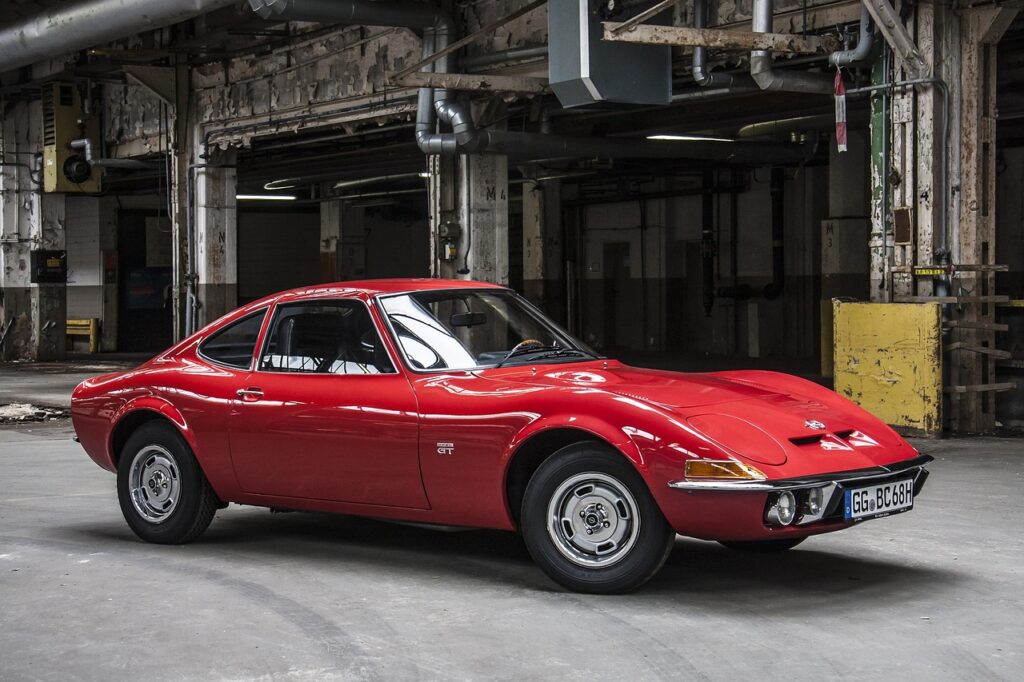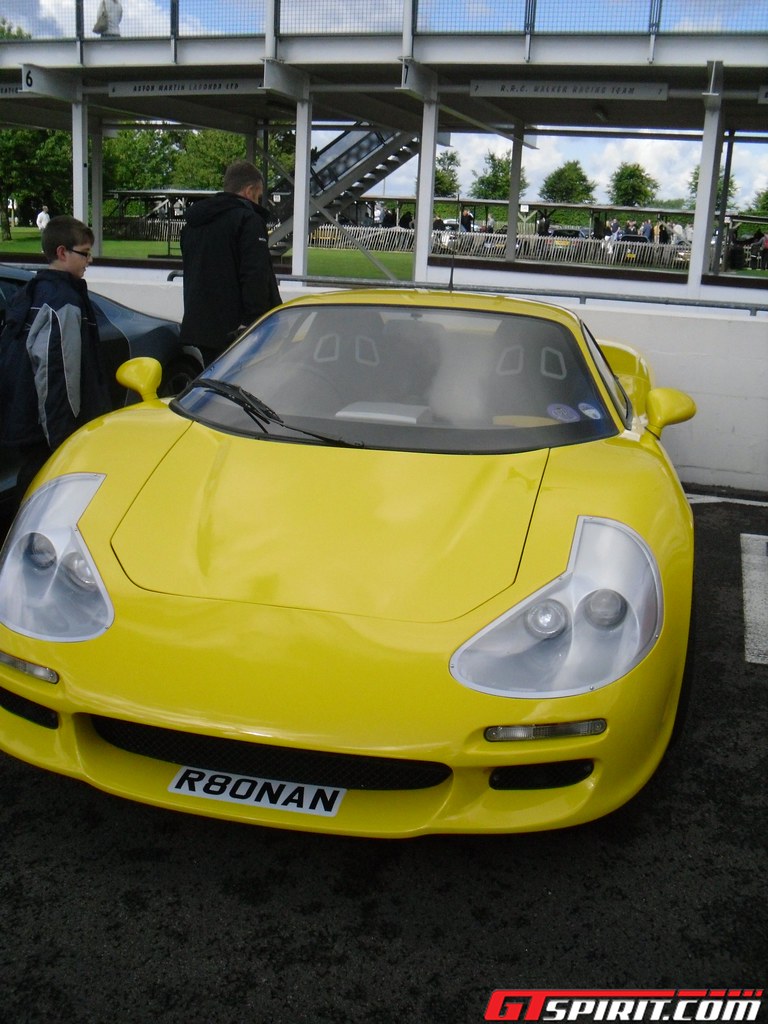
The British automotive industry, a crucible of ingenuity and ambition, has forged some of the most iconic vehicles the world has ever witnessed. It’s a landscape marked by both breathtaking triumphs and moments where the industry teetered on the very edge of oblivion, often simultaneously. While household names like the Lotus Elise, Aston Martin Vantage, and Ariel Atom rightly command global admiration for their groundbreaking styling, unparalleled engineering, and dynamic capabilities, a vast treasure trove of equally fascinating machines has, over time, quietly slipped from the collective memory.
Britain’s remarkable penchant for producing an endless stream of sports cars, a quantity that would truly put any other nation to shame, is a defining characteristic of its automotive heritage. This prolific output, however, has an interesting side effect: a significant number of these incredible vehicles have simply been forgotten as the decades rolled by. They are not necessarily failures; rather, their obscurity often stems from a confluence of factors, be it financial hurdles, insufficient marketing efforts, or simply the sheer volume of competition in a vibrant, innovative market.
Today, we embark on a fascinating journey to rediscover some of these unsung heroes, ten British sports cars that, despite their unique qualities and contributions to the automotive tapestry, are largely overlooked in modern discussions. Join us as we shine a light on the innovation, engineering prowess, and sheer passion that went into creating these truly rare machines, proving that even in obscurity, true automotive excellence can be found.
1. **Noble M10**: For many automotive enthusiasts, the name Noble Automotive immediately conjures images of the giant-killing M12, a turbocharged beast that reshaped expectations for track-focused performance when it arrived in 2000. Yet, before this icon, there was the Noble M10, the company’s inaugural sports car and, through no fault of its own, its most fleeting production model. Only six examples of this groundbreaking machine ever saw the light of day, making it an exceptionally rare piece of automotive history and a testament to Noble’s embryonic vision.
The M10 represented a distinctly different philosophy from its more aggressive successor. While the M12 embraced forced induction, the M10 retained a naturally aspirated 2.5-litre Ford V6 engine, producing a modest yet capable 168bhp. Crucially, it was designed as a convertible, a stark contrast to the M12’s coupé configuration, highlighting a less overtly serious, more open-air driving experience in its scope, though certainly not in the meticulous care and attention dedicated to its design and construction. Its appearance, described by some as a little ungainly or leaning towards a kit car aesthetic when compared to the Le Mans-esque M12, nonetheless garnered praise from those fortunate enough to drive it.
Despite its limited production numbers, which would make finding an M10 today an extraordinary challenge, acquiring one would mean owning a genuine piece of the foundation upon which Noble’s subsequent successes were built. It stands as a pivotal, if brief, chapter in the story of a company renowned for delivering exceptional performance cars, showcasing the initial spark of engineering brilliance that would later define the brand. Its rarity only adds to its allure, marking it as a true connoisseur’s choice for collectors of British automotive esoterica.
Read more about: Unwrap the Joy: 16 Amazon Finds for Festive Gifts Under $100
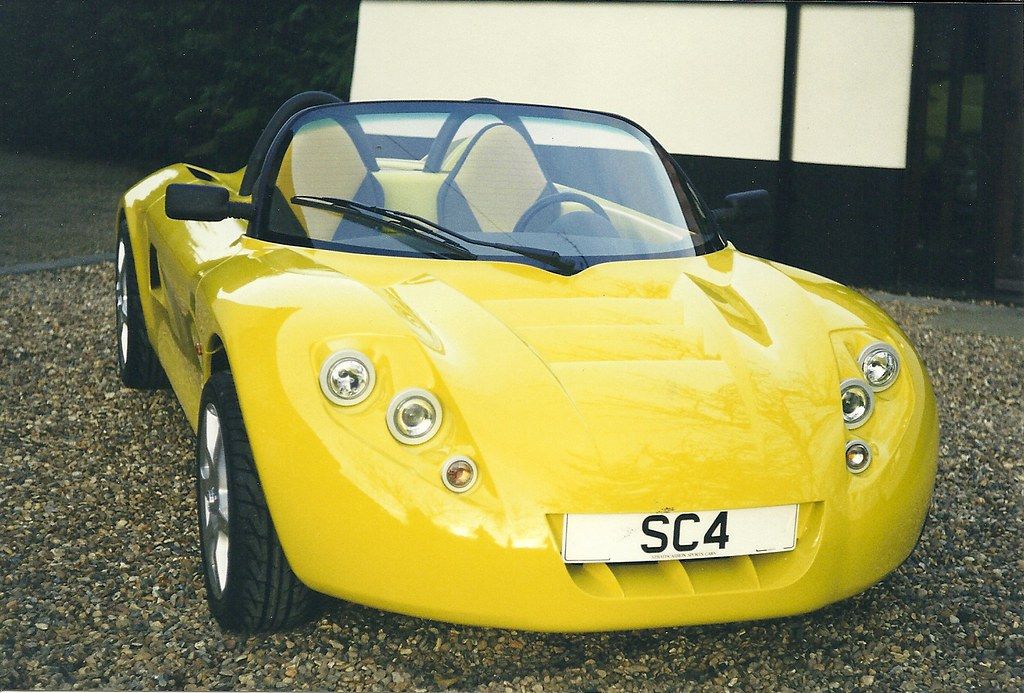
2. **Strathcarron SC-5A**: The late 1990s witnessed a fascinating arms race among lightweight sports car manufacturers, pushing the boundaries of minimalist design in pursuit of pure driving exhilaration. Arriving in 1999, the Strathcarron SC-5A emerged as a notable contender in this niche, joining a select group of even more extreme rivals to the Lotus Elise. It unapologetically sacrificed almost every semblance of everyday practicality, focusing instead on delivering the bare necessities for unadulterated sports car thrills. This commitment to an undiluted driving experience truly set it apart.
This remarkable machine was the brainchild of founder Ian Macpherson, with the striking design penned by Simon Cox, an individual also credited with the distinct styling of the Vauxhall VX220. The SC-5A was an exercise in extreme lightness and compactness, measuring just 3.6 metres in length and tipping the scales at a mere 550kg. Powering this featherweight was a surprisingly potent 123bhp 1.2-litre four-cylinder motorcycle engine sourced from Triumph, demonstrating a resourceful and effective approach to performance. Macpherson, himself the son of Lord Strathcarron, went to great lengths to ensure top-tier engineering, even enlisting Ilmor to build the engines and Reynard to construct the sophisticated aluminium chassis, a testament to the ambition behind the project.
Unfortunately, the SC-5A’s promising trajectory was hampered by several challenges. A change in SVA (Single Vehicle Approval) regulations in the UK proved to be a significant hurdle for its chosen powerplant, impacting its viability. Critical reviews were also mixed; while acknowledging its raw appeal, many found it expensive when compared to the more practical and established Elise. Consequently, very few SC-5A units were ever built, contributing to its extreme rarity today. The design, however, found a second life in the 2000s, returning in kit form as the Marlin 5EXi, initially K-series powered, and later restyled to accommodate Honda or Audi engines, providing a faint echo of the original’s innovative spirit.
3. **FBS Census**: In the vibrant, sometimes eccentric, world of small-volume British sports car manufacturing, achieving styling harmony has not always been a consistent strong suit. The FBS Census, regrettably, serves as a stark example of a car undone by its aesthetics; its appearance was so far removed from conventional notions of attractiveness that it was almost at the styling’s antithesis. Ironically, FBS stood for the “Future of British Sportscars,” a moniker that hindsight reveals to be a rather optimistic misnomer, given the car’s eventual fate.
Despite its polarizing looks, FBS adhered to many conventional principles for a sports car. Power was derived from a 2.5-litre Ford V6, a sensible choice given its plentiful supply, decent power output, and ease of servicing. Drive was routed to the rear wheels via a manual gearbox, and its kerb weight remained commendably under a metric ton. On paper, putting styling aside, there appeared to be little that could go fundamentally wrong with the Census’s mechanical recipe, embodying a straightforward approach to performance vehicle construction that resonated with many British niche manufacturers.
However, the car struggled to win over the motoring press. Auto Express, for instance, delivered a scathing assessment, citing “dodgy handling, scruffy looks, and rough engines.” The build quality also left much to be desired, further eroding its appeal. Perhaps the most damning indictment came from evo Magazine, which made the extraordinary decision not to even publish its review, an ignominious distinction it had previously reserved only for the “too embarrassing to be seen in” Daihatsu Copen. While a handful of reviews were marginally more positive, the overwhelming consensus limited its production to a mere eight examples before FBS truly ceased to be the future of British sports cars, leaving behind a curious, if aesthetically challenged, footnote in history.

4. **Lotus Europa S**: Lotus, a marque synonymous with lightweight performance and unparalleled driving dynamics, rarely misses its mark. Their enduring models, such as the Elise, Exige, and Evora, continue to be hailed for their exceptional driving characteristics, remaining as compelling today as they were upon their debut. It is within this celebrated lineage that the Lotus Europa S, produced between 2006 and 2010, often finds itself as an intriguing, yet largely forgotten, footnote. This Elise-based sports car represented a departure for the brand, and its reception was, at best, mixed.
Early whispers surrounding the Europa S suggested it might be destined for Proton, Lotus’s then-parent company, with its styling indeed bearing contemporary Proton cues and an initial plan for Malaysian production. Perhaps, given its ultimate trajectory and reception, this original intent might have been a more fitting path. The Europa S was by no means a poor car; it possessed a certain competence and comfort. However, its fundamental challenge lay in its identity: it wasn’t as overtly entertaining or raw as its more track-focused siblings, the Elise and Exige, nor did it fully succeed in establishing itself as the more refined, comfortable GT car that the later Evora would expertly become.
Mechanically, the Europa S was, in essence, a Vauxhall VX220 Turbo equipped with a fixed roof, lacking the bespoke, all-rounder appeal that would later define the Evora. Its limited production run, with little more than 500 units ever built, ensures its rarity in today’s market, contributing to firm prices for used examples. Yet, this very scarcity paradoxically makes it a relative unknown within the broader Lotus narrative, overshadowed by its more celebrated and focused stablemates. It stands as a testament to Lotus’s continuous experimentation, a valid attempt to broaden its appeal that ultimately became an intriguing, albeit less iconic, chapter.
Car Model Information: 2023 GMC Sierra 1500 Denali
Name: Lotus Europa S
Manufacturer: Lotus Cars
Production: 2006–2010 ,458 produced
Assembly: Hethel,Norfolk,England
Layout: Rear mid-engine, rear-wheel-drive layout
Predecessor: Lotus Esprit
Designer: Russell Carr
Successor: Lotus Evora
Class: Sports car
BodyStyle: coupé
Engine: Family II engine#Z20LER,Turbocharger,Straight-four engine
Transmission: Getrag F28/6 transmission,manual transmission
Wheelbase: Convert
Length: Convert
Width: Convert
Height: Convert
Weight: 995 kg
Abbr: on
Platform: Lotus Elise#Series 2
Related: Lotus Elise,Vauxhall VX220,Lotus Exige#Series 2,Lotus 2-Eleven,Tesla Roadster (2008),Dodge EV,Proton Lekir
Sp: uk
Categories: 2010s cars, All articles with unsourced statements, Articles with short description, Articles with unsourced statements from January 2010, Cars introduced in 2006
Summary: The Lotus Europa S (Type 121) is a sports car built by the British company Lotus Cars from 2006 until 2010. It has a rear mid-engine, rear-wheel-drive layout and was designed to be a more comfortable variant of the driver-focused Lotus Elise and its derivative, the Exige. The Europa S revived the Europa nameplate previously used in the 1960s and 1970s.
The Europa S features a larger boot (trunk), greater sound-proofing and easier cabin access due to the lower chassis sides and higher roof line. The Europa S includes creature comforts such as air conditioning, a sound system, leather interior and interior carpeting as standard equipment reflecting its grand touring nature.
Get more information about: Lotus Europa S
Buying a high-performing used car >>>
Brand: Lotus Model: Europa S
Price: $61,999 Mileage: 17,877 mi.
Read more about: Think You Know Cars? Debunking 19 Driving & Safety Myths
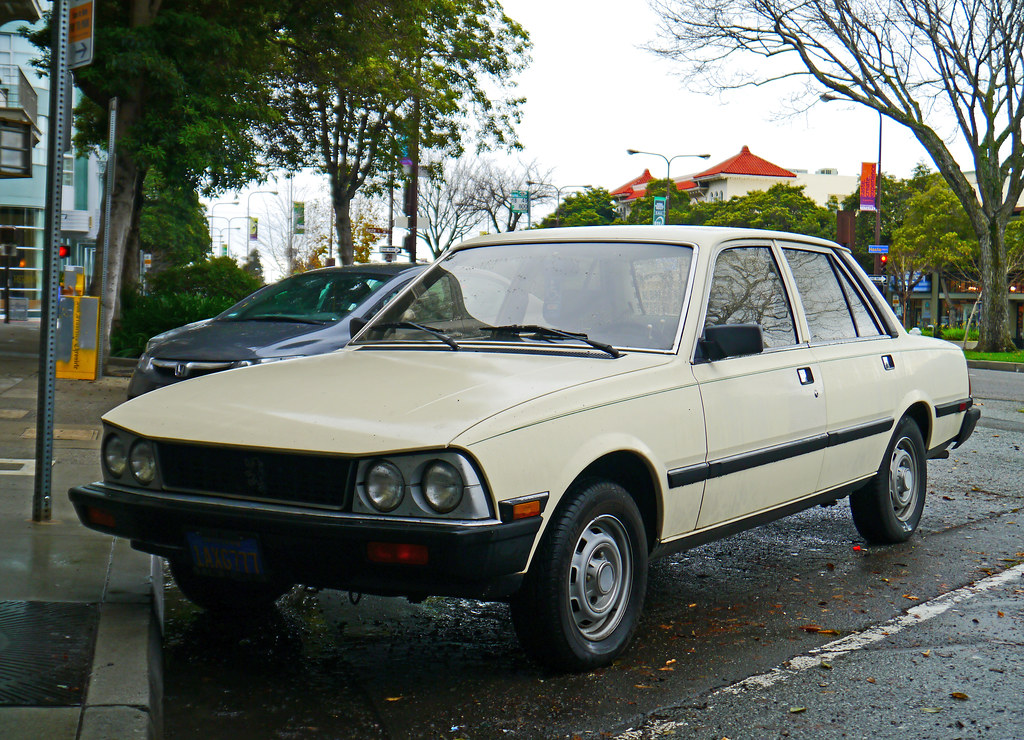
5. **Berkeley**: The late 1950s bore witness to the unique creations of Berkeley, a brand often overlooked outside the niche circles of microcar enthusiasts. While Berkeley was primarily known for its caravans, its powered output was exclusively dedicated to sports cars—tiny, lightweight machines that showcased an unusual, yet innovative, approach to automotive construction. These vehicles, despite their humble origins and motorcycle-derived engines, were familiar with respectably low sales figures, often finding their way into homes as an affordable entry into sports car ownership.
Berkeley cars were undeniably distinctive. Overtly microcars in their scale, they relied on motorcycle engines for propulsion and were sold at highly competitive prices. Their construction methodology was particularly unique: the pioneering Berkeley Sports of 1956 notably lacked a conventional chassis. Instead, leveraging the brand’s extensive expertise with fibreglass in the caravan market, the car’s structure was ingeniously formed from three large, interlocking sections of the material, creating an incredibly light and rigid body shell. This innovative use of composites was far ahead of its time for affordable vehicles.
The primary allure of the original Sports lay in its pricing. At approximately £575, a figure equivalent to less than £15,000 today, it was roughly £140 cheaper than the next most affordable sports car on the market, presenting an undeniable value proposition. Furthermore, it boasted impressive fuel economy, achieving around 60mpg. Subsequent Berkeley models evolved, gaining more conventional four-stroke engines and, in some cases, deliberately losing a wheel for certain configurations, further showcasing the brand’s experimental spirit. Despite respectable sales for a niche manufacturer, Berkeley eventually succumbed to the same fate as many other microcar producers: the advent of the revolutionary Mini in 1959, which offered superior practicality and performance at a similar price point, ultimately consigned the charming, innovative Berkeleys to the annals of forgotten automotive history.
Having explored the initial set of Britain’s automotive curiosities, our journey into the archives of forgotten British sports cars continues, revealing five more machines that embody the nation’s unique approach to performance vehicle design and engineering. These are cars that, for various reasons—be it market shifts, unforeseen competition, or simply the relentless march of time—have largely faded from collective memory, despite their significant contributions and compelling stories. They stand as a testament to the persistent spirit of innovation that defines the British automotive landscape, even in its most unconventional corners.
Read more about: Beyond the Crown: 12 Truly Wild and Undignified Royal Deaths That Will Blow Your Mind
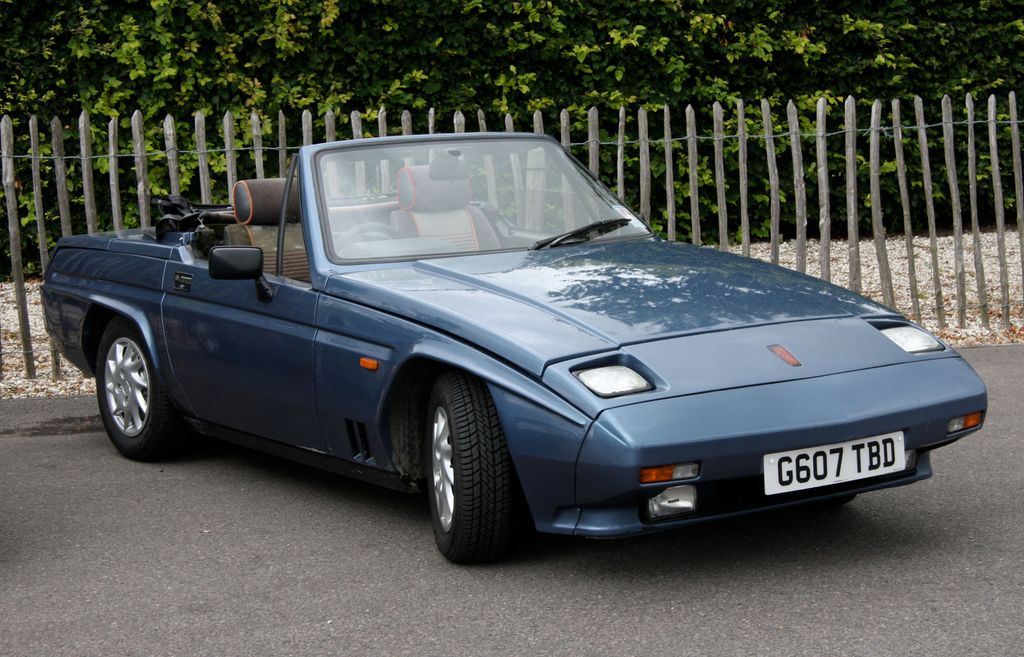
6. **Reliant Scimitar SS1**: When the name Reliant Scimitar is uttered, it’s almost invariably the long-running GT model, produced between 1964 and 1986, that springs to mind. That grand tourer, with its robust Ford Essex V6 and well-documented royal ownership, forged an indelible image. However, from 1984 to 1990, the Scimitar badge adorned a fundamentally different vehicle, a compact and sharply styled sports car known as the SS1, a machine that truly deserves a closer look for its distinctive engineering and design.
This later iteration of the Scimitar was a departure from its predecessor in both scale and motivation. Considerably smaller and powered by a series of Ford CVH four-cylinder engines, the SS1 featured a distinctive, wedgy design penned by the esteemed Italian designer Michelotti. Beneath its composite panels lay a sophisticated backbone-type chassis, a construction method that immediately brought to mind the iconic classic Lotus Elan, hinting at a focus on lightweight agility and responsive handling that defined its character on the road.
Indeed, the Scimitar SS1 frequently found itself pitted against Lotus’s own M100 Elan in contemporary group tests, a testament to its dynamic aspirations. However, its ultimate fate was sealed not by its British rival, but by the sensational arrival of the Mazda MX-5. While the Reliant was lighter and, in some configurations, quicker, the Mazda’s overwhelming mass-market quality, reliability, and accessible pricing proved an insurmountable challenge. For less than a thousand pounds more, buyers could access a level of refinement and widespread appeal that no small British firm, no matter how innovative, could hope to match, relegating the SS1 and its later SST evolution to the dustier pages of automotive history.
Car Model Information: 2023 GMC Sierra 1500 Denali
Sp: uk
Name: Reliant Scimitar SS1
Production: 1984–1990
Engine: Ford CVH engine#1.3,Ford CVH engine#1.4,Ford CVH engine#1.6,Nissan CA engine#CA18ET
Length: 3886 mm
Abbr: on
Width: 1582 mm
Wheelbase: 2133 mm
Height: 1240 mm
Successor: #SST
Transmission: 4- or 5-speed manual
Weight: 1850 lb
Designer: Giovanni Michelotti
Categories: 1990s cars, All articles with unsourced statements, Articles with short description, Articles with unsourced statements from December 2020, Cars discontinued in 1995
Summary: The Reliant Scimitar SS1 is an automobile which was produced by British manufacturer Reliant from 1984 to 1995.
Aiming to fill a gap in the small sports car market, Scimitar SS1 was launched in 1984 at the British International Motor Show in Birmingham. It was Giovanni Michelotti’s last design. The name was reported to stand for Small Sports 1. Despite plans for production of 2000 a year, only 1,507 models were produced in the ten years of overall production. In 1990, the SS1 was renamed as the Scimitar SST following a facelift and in 1992 was re-launched as the Scimitar Sabre. Sales of the Sabre ceased in 1995 with the collapse of Reliant.
Get more information about: Reliant Scimitar SS1
Buying a high-performing used car >>>
Brand: Reliant Model: Scimitar SS1
Price: $61,999 Mileage: 17,877 mi.
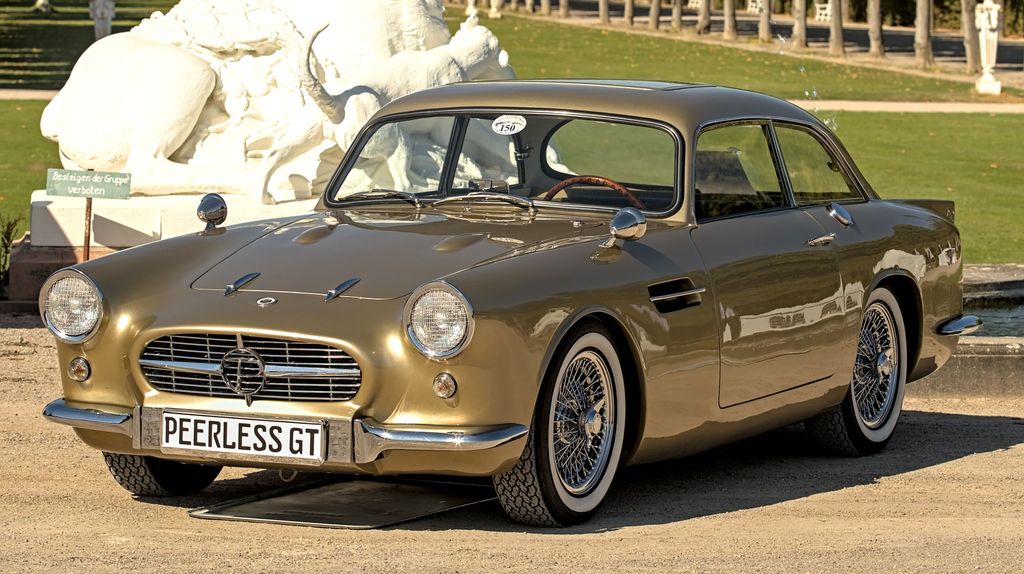
7. **Peerless GT**: A casual glance at the Peerless GT’s elegant lines might lead one to believe it was merely a budget-conscious imitation of an Aston Martin DB4, given its clear stylistic affinities to the more prestigious marque. Yet, to dismiss it as such would be a profound disservice to a car that was not only impressive in its own right but also achieved a remarkable class victory at the grueling 1958 24 Hours of Le Mans, cementing its place as a true competitor on the international stage.
Beneath its undeniably blue-blooded fibreglass exterior, the Peerless GT cleverly incorporated the robust running gear of a Triumph TR3, a choice that blended practicality with proven performance. However, the true engineering innovation lay in the Peerless structure itself: a tubular space frame chassis paired with a sophisticated De Dion rear axle. This suspension setup was a significant technical advancement over the TR3’s simpler live axle, offering superior road holding and ride comfort, which was crucial for both road use and endurance racing.
This thoughtful combination of established components and bespoke engineering yielded a car capable of delivering genuinely strong performance, unequivocally validating its Le Mans triumph. The Peerless GT was a bona fide 100mph car, a significant achievement for its era. Sadly, the company itself faced financial difficulties and went bankrupt in 1960. While the model found a brief second life as the Warwick GT (from 1960-1962) and later evolved into the more well-known Gordon-Keeble from 1964, the original Peerless GT remains largely overlooked. With only 325 units ever built, it stands as a rare and historically significant example of British sporting prowess that, regrettably, few remember today.
Read more about: From Roaring Powerhouses to Everyday Icons: 14 Cars That Defined the Dynamic 1920s

8. **Gilbern Invader**: For our Welsh readers, labeling their national car as “forgotten” might understandably elicit a spirited rebuttal. Perhaps it’s more accurate to describe the Gilbern Invader as “unfairly unremembered,” for this homegrown sports car, produced by the only car manufacturer ever to emerge from Wales, certainly merits far greater recognition than it typically receives in broader automotive discourse. Gilbern produced a handful of distinct sports car models between 1959 and 1973, but the Invader, with over 600 units built, was arguably the most numerous and well-developed of them all.
The Invader stood as a genuine rival to contemporary British sports GTs such as the ever-popular Reliant Scimitar and the ubiquitous Ford Capri. Like both of those vehicles, it judiciously utilized the familiar and reliable 3-litre Ford Essex V6 engine, a choice that ensured both robust performance and relative ease of maintenance. Its mechanical straightforwardness, combined with its distinct character, truly deserved for it to be considered alongside these more frequently cited counterparts, rather than being relegated to a niche footnote in automotive history.
Building upon the foundations of the earlier Gilbern Genie, the Invader was a more thoroughly developed and refined machine, and by all accounts, a rather handsome one too. Its styling carried a subtle hint of the timeless 105-series Alfa Romeo GTV, lending it an air of sophistication. Motor Sport’s correspondent, reviewing the car back in 1971, explicitly noted this design quality. While acknowledging that the car, as might be expected from a small-volume marque, was not without its “irritating faults,” the reviewer effusively praised its commendable performance and impressive handling. Their conclusion, “The Gilbern should definitely be on any short list,” serves as a powerful endorsement, and indeed, we’ve proudly included it on ours.
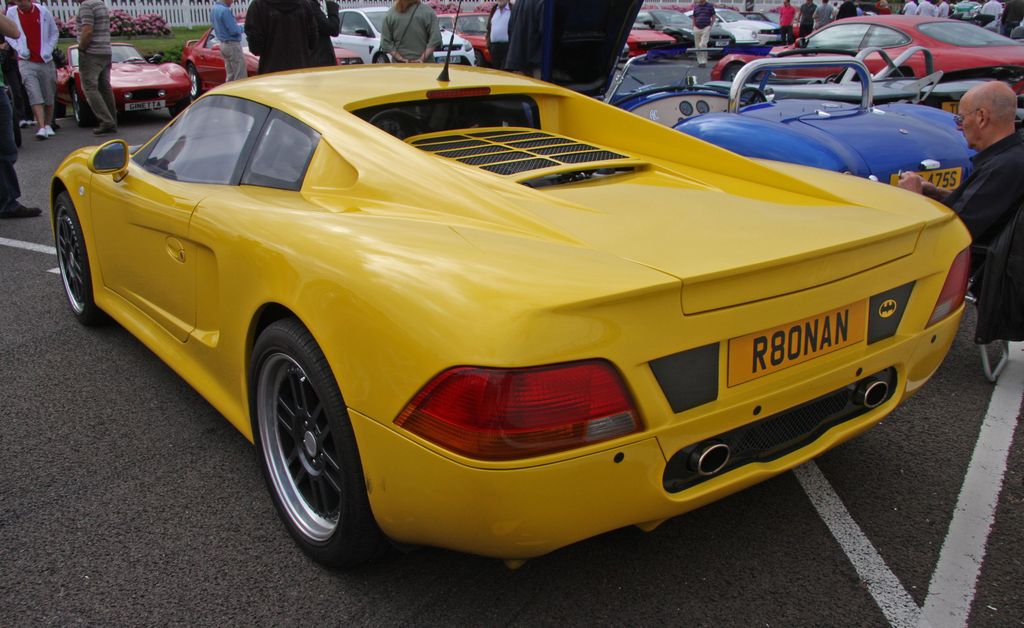
9. **Spectre R42**: It might come as a surprise to some, but the Spectre R42 joins a long and distinguished list of British small-volume sports cars that found their heart in a Ford powerplant. The Blue Oval’s engines have, without a doubt, been integrated into more bespoke and niche performance vehicles than those of almost any other marque. However, in stark contrast to the Essex V6 or breathed-upon four-cylinder units powering many others on this list, the short-lived Spectre R42 was driven by a robust, Mustang-derived 4.6-litre V8, clearly signalling its supercar aspirations.
Such a potent engine selection is, of course, entirely fitting for a vehicle positioned within the exclusive supercar segment. The visionary behind Spectre, Ray Christopher (a name not to be confused with the fictional belligerent organization from the James Bond franchise), brought a wealth of experience with Ford power to the project, having previously established a reputation for building high-quality replicas of the legendary Ford GT40. This historical connection profoundly shaped the R42’s conception and execution.
In essence, the Spectre R42 was Ray Christopher’s ambitious interpretation of a modern-day GT40. It adopted many of the iconic elements that defined its spiritual predecessor, from its mid-engined layout, which optimized weight distribution and handling, to a remarkably similar monocoque structure. This advanced chassis was crafted from a sophisticated blend of lightweight aluminium and high-strength honeycomb composites, pushing the boundaries of construction for its time. Interestingly, the car’s name, ‘R42,’ suggested a height of 42 inches, though in reality, it stood at 43 inches tall. Despite its technological sophistication and ambitious design, the R42 suffered from inconsistent build quality, a common pitfall for fledgling supercar manufacturers. Ultimately, a mere 23 examples were ever built before the Spectre R42, much like a phantom, vanished from the automotive scene, leaving behind a fascinating, if brief, chapter in British supercar history.
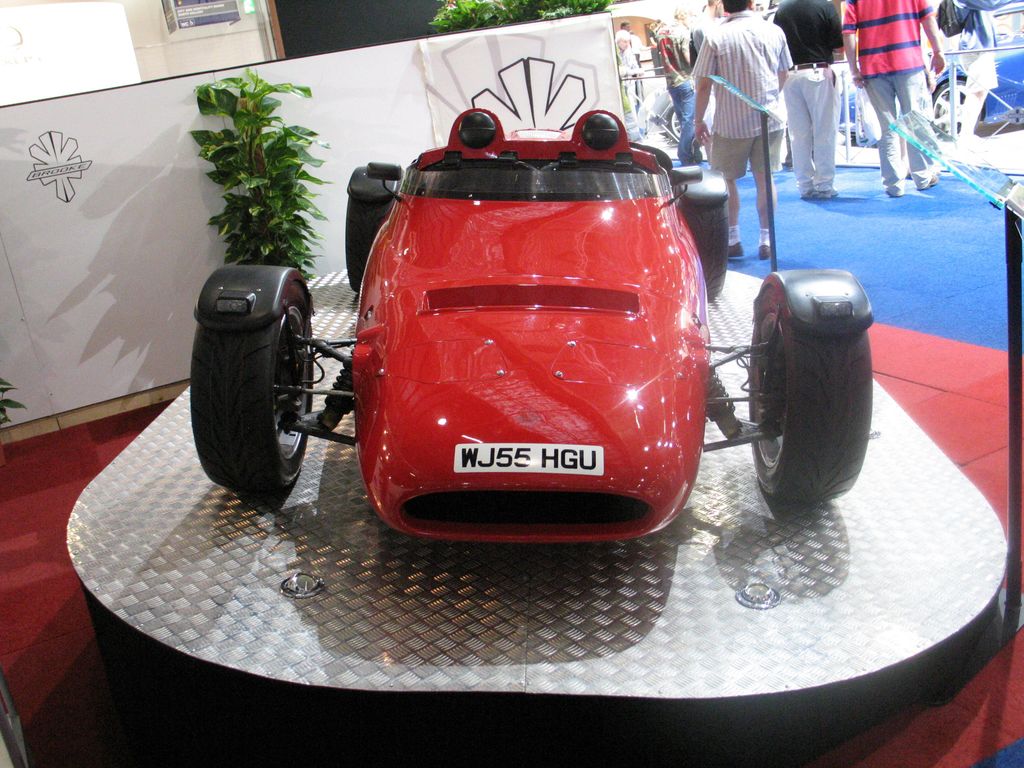
10. **Brooke Double R**: In curating this collection of rare British sports cars, we have largely steered clear of models that are direct replicas or overly explicit inspirations of more popular designs, choosing to focus instead on truly distinct creations. This is why you won’t find a myriad of Seven replicas, Cobra homages, or countless models explicitly inspired by 1940s or 50s MGs or Morgans. However, an exception must be made for the Brooke Double R, a machine that, while drawing undeniable inspiration from Chris Craft and Gordon Murray’s legendary Rocket, carved out its own unique and impressive identity.
Brooke Automotive first emerged on the scene in the mid-1990s, but the Double R, the subject of our focus, was a product of the early 2000s, representing a more refined and developed vision. Conceptually, one could think of it as a Rocket reimagined with a side-by-side seating configuration, rather than the original’s tandem arrangement. Critically, while the Rocket famously utilized motorcycle power for its extreme lightweight performance, the Double R opted for a more conventional, yet still highly potent, 2.3-litre inline four-cylinder engine—a Ford unit, as one might have come to expect from this list, expertly prepared by Cosworth.
The Brooke Double R was, by all accounts, exceptionally well-received by the motoring press. *evo Magazine*, a highly respected authority on performance cars, bestowed upon it an impressive four-and-a-half-star rating out of five. Their review lauded its exemplary ride and handling characteristics, praising the potent grunt delivered by its Cosworth-tuned engine, and highlighting its remarkable value proposition, retailing at just under £28,000 as a fully-built vehicle. Despite its critical acclaim and inherent brilliance, the company behind it, regrettably, has since disappeared into the ether. Consequently, the Brooke Double R, impressive as it was, seems to have slipped quietly from our collective automotive memories, a true shame for a car that offered so much pure driving exhilaration.
Car Model Information: 2023 GMC Sierra 1500 Denali
Categories: All stub articles, Articles with short description, Car manufacturers of the United Kingdom, Companies based in Devon, Motor vehicle company stubs
Summary: Brooke Cars Limited is a British car manufacturer of specialist sports cars, based near Honiton in Devon, England. It was established in 2002, following the purchase of the vehicle rights from Brooke Kensington.
Get more information about: Brooke Cars
Buying a high-performing used car >>>
Brand: Brooke Model: Double R
Price: $61,999 Mileage: 17,877 mi.
Read more about: Hollywood’s Unscripted Dramas: 15 Roles That Forever Altered Actor Careers and Legacies
As we conclude our exploration of these ten rare British automotive gems, it’s clear that the story of Britain’s car industry is far richer and more nuanced than the celebrated icons alone suggest. From experimental microcars and Le Mans-winning GTs to track-focused supercars and everyday roadsters that battled global giants, each of these forgotten machines represents a chapter of ingenuity, ambition, and often, the harsh realities of a highly competitive market. They are not merely relics but crucial pieces of a fascinating automotive mosaic, reminding us that true innovation and passion can be found even in the most obscure corners of history. These vehicles serve as a vibrant testament to the enduring, sometimes eccentric, spirit that continues to drive British engineering forward.

